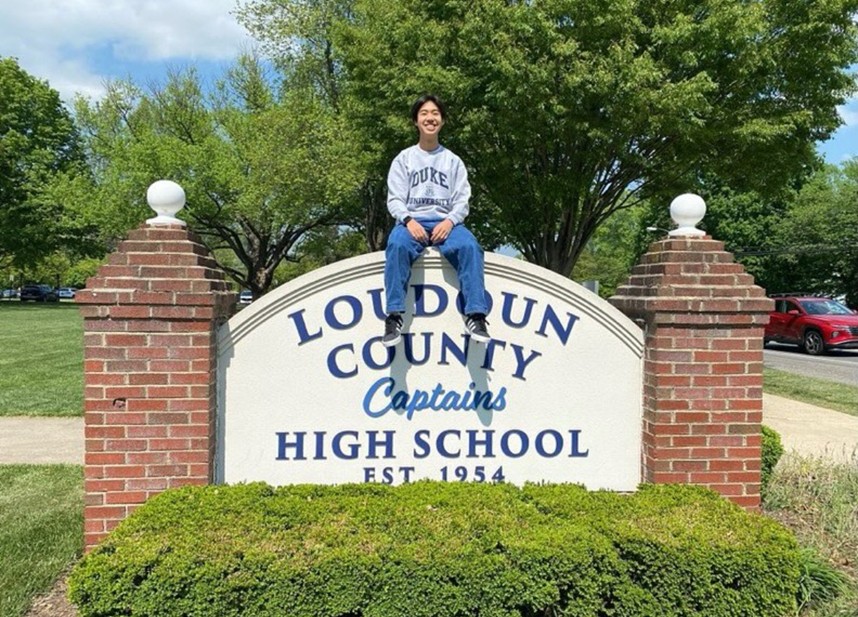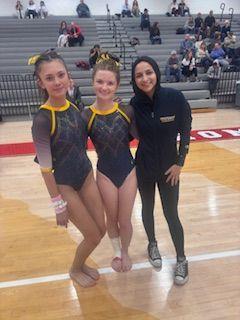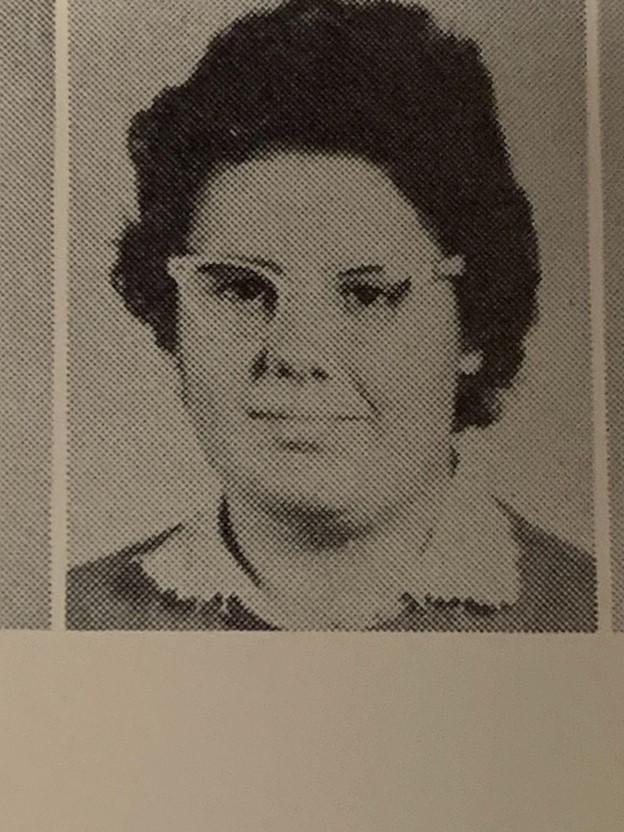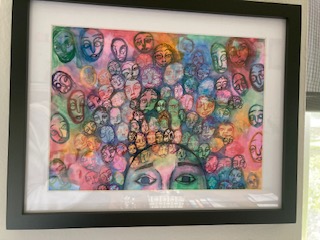For years, there has been the question of whether County is a sports or arts-focused school, and why it is that way.
Since she began working here, Principal Dr. Michelle Luttrell has worked to make County a more inclusive school, no matter what your interests are.
“I feel that since I’ve been here for the past 10 years, the school has gotten steadily better at giving fine and performing arts students more opportunities and showcasing them more,” Luttrell said.
One way that she’s showcased fine arts students more is through the Principal’s gallery, where she gets to choose her favorite piece of senior art and hang it up in the hallway.
“I also buy student art sometimes, and have numerous pieces in my office and home,” Luttrell said. She then pointed to one in her office. It brought out a vibrant array of colors shrouded in deep emotion.
This is just one way that the school has been supporting the arts, but that doesn’t mean that sports don’t have more of an influence over the student body.
“Our ticket sales (for sports games) are the third largest in the county, which means that we have good participation by our students and by our parents in the community,” Athletic Director Kate Cassidy said.
This goes to show how important sports are to our school. Attending events such as football games helps bring our community together and strengthen school spirit. Not only do sports games have high attendance, but they also have a large online presence. Sports teams post on X, Instagram, and their respective websites, unlike many of the performing and fine arts programs. However, this may not necessarily be a negative thing.
“There’s almost zero online awareness. I don’t do anything online. All of our social media is student-run and they handle it. I approve posts and that’s about all of my involvement,” Matthew Trkula said, the Guitar and Orchestra teacher.
He’s happy with it being student-run, possibly because his motives as a teacher are different compared to those of a sports coach.
“Our only income is gate recent when people pay to come to the games. Two years ago the school went into a shared revenue system. That means that all of the money that comes in, goes to the county, and they distribute it between the 17 schools,” Cassidy said.
Sports teams are dependent on game attendance so that they can pay for items such as equipment and uniforms. Not to mention any variables, such as broken equipment. Tens of thousands of dollars are necessary to pay for all of this equipment, while fine and performing arts don’t cost nearly as much.
“We have what we need, and I’m very grateful for that. It (the money) either comes from the school or the county, and we use it to buy music, and we use it to buy supplies, and mostly just keep operations going,” Trkula said.
The music programs just don’t seem to require as much money to have all of the things that they need. They’re appreciative of what they have. “ It’s not like this everywhere, and it wasn’t like this at my last school. It’s something I’m very grateful for, and do not take for granted,” Trkula said.
The idea that arts programs don’t need as much money as sports programs is confirmed by other teachers, such as Kyla Jenkins, one of the art teachers.
“We were sitting down to make our supply list, and we were like ‘We’re good’! The county supports you,” Jenkins said. The fine arts programs gain money from the school and through fundraisers run by booster clubs. They also don’t have a large social media presence.
“Standard LCPS webpage, we have an Instagram and Twitter for the art club. A decent amount, but not a lot of online stuff. We publicize the events, but that is about it,” Jenkins said.
Fine arts also doesn’t have a large social media presence. This is not because there aren’t people willing to raise online awareness, or that the school doesn’t support these
programs, but because arts programs just don’t need the revenue generated through event attendance.
The thing she enjoys most is “Getting to know the students in a different way, because we have to get really creative/vulnerable, and we have to share ideas/thoughts, in ways which I think are different from talking to a math teacher,” Jenkins said.
Fine and performing arts teachers at the school tend to focus more on building connections with their students rather than creating more game attendance to pay for equipment. “Every day is awesome when you get to make music with other people,” Trkula said.
That’s not to say that the sports coaches don’t care emotionally about their players, or that all they care about is winning. This is just discussing the differences between the amount of online presence and the sports and arts programs.
“Athletics is really important because it’s a bigger, wider audience. The fine and performing arts hit those smaller families,” Jenkins said.
She’s undecided on whether there’s a more sports or arts-focused environment. One thing she does know is that Luttrell does “a great job of supporting the arts and athletics.” She’s proud of the growth the arts program has had and understands that sports need more money simply because there are more people involved.
“I think that whatever kids are into they have a lot of opportunities to pursue it. And I’ve never felt like one has been put above the other. It seems balanced to me,” Trkula said.
There are so many different clubs you can join or classes you can try. Both performing arts and sports administrators can agree on this. “I think County is a well-rounded school. No matter what type of kid you are, or what interests you have, you can find something to do,” Cassidy said.






















